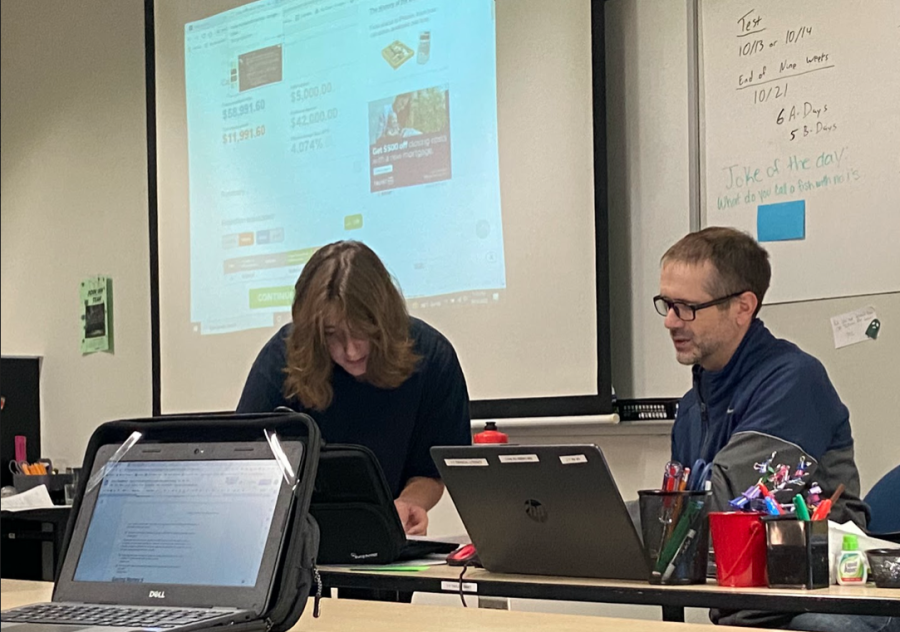Freshmen take on finance
New financial literacy requirements for Ohio
Financial literacy student asks financial literacy teacher, Richard Talbott, a question.
Every year hundreds of high school students enter the workforce for the very first time. They earn their first paycheck, open their first bank account, and enjoy the freedoms that come with managing their own money.
With that freedom comes taxes and dues and responsibilities. Responsibilities that most high schoolers are not equipped to handle.
On Oct. 28, 2021, Ohio became the 10th state to require financial education at the high school level and implemented a financial literacy graduation requirement for all high school students after the graduating year of 2025. While every new student will take it, many are wondering why the class was implemented and what it teaches.
Financial literacy, the ability to understand financial information, has been a focus of many groups in the past decade. Next Gen Personal Finance (NGPF) is one of these groups and their goal is to make financial education accessible to all students.
The mission statement on their website reads, “…school is where life-changing financial education can reach ALL young people, not just the lucky few.”
NGPF and similar organizations invest a lot of time and money into making courses, they also dedicate a lot of time to research. NGPF has several studies about the benefits of financial education linked on their website.
“The findings from our meta-analysis are clear-cut,” the authors of Financial Education Matters: Testing the Effectiveness of Financial Education Across 76 Randomized Experiments said, “Financial education improves financial knowledge and financial behaviors.”
Not only does financial education improve students’ ability to understand money, but the OECD PISA report on financial literacy in 2020 raises concerns about the financial capabilities of teenagers. Stating that only one in three students have the skillset to interpret a bank statement.
“I mean obviously they need it for a reason because people are going bankrupt all the time,” — Richard Talbott
There is a clear need for better financial comprehension in the United States and the new financial literacy requirements are a proactive first step to getting the younger generation prepared for handling their own money.
Emma Campbell, a freshman taking the financial literacy class this year, believes that the class will benefit many students.
“I think it helps you understand those important things better,” Campbell said. “And for most kids, they aren’t taught about that at home and having a class for it would be very helpful for their futures as well.”
The financial requirement is aiming to make the difficult transition into the workforce and the world of money easier for young adults. Teaching useful skills to teenagers who will soon need them.
“You learn about many different things,” Campbell said. “Such as banking, credit, credit cards, debit cards, paychecks, how to budget, taxes and sometimes different careers, net worth and financial goals.”
These types of skills are necessary to live in our society and offering them for free will greatly improve the lives of many students. In addition to the class being useful, the work is not difficult.
Sock Cook, another freshman taking the financial literacy class, loves their teacher and how he teaches the class.
“I look forward to it, not for the class but for Mr. Talbot,” Cook said. “It’s run in a very casual way…you have a lot of time to do assignments and it’s hard to get behind.”
Overall, the financial literacy requirement is meant to prepare students for their futures in a way every student will need. Regardless of their job or plans after graduation, this class is designed to aid them in the confusing world of finance.
Your donation will support the student journalists of GlenOak High School. Your contribution will allow us to purchase equipment and cover our annual website hosting costs.

Keira Sweeney is a 10th grader at GlenOak this year. This will be her first year on staff as a staff writer. Keira is involved in the marching band and...











